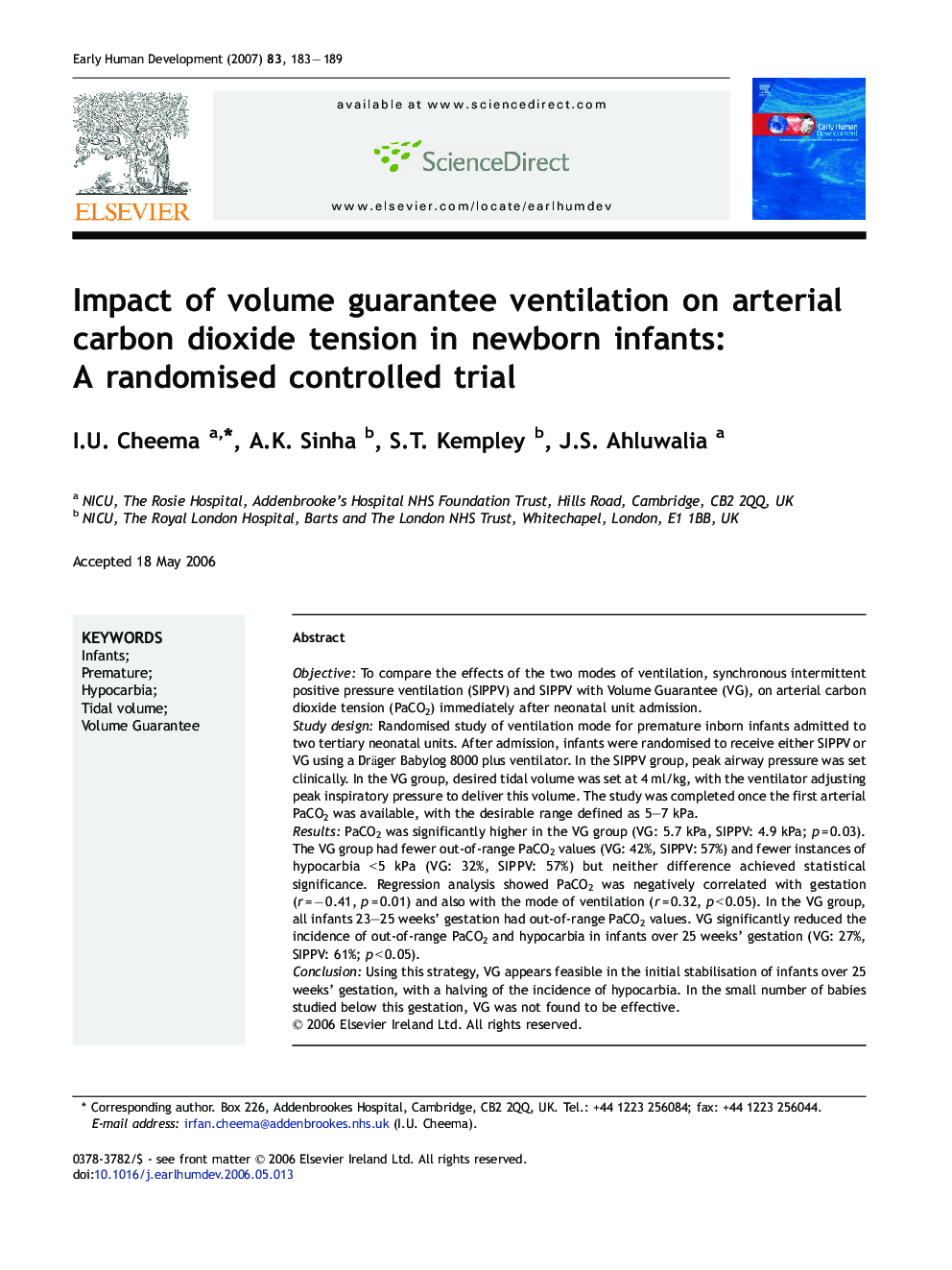| Article ID | Journal | Published Year | Pages | File Type |
|---|---|---|---|---|
| 3918633 | Early Human Development | 2007 | 7 Pages |
ObjectiveTo compare the effects of the two modes of ventilation, synchronous intermittent positive pressure ventilation (SIPPV) and SIPPV with Volume Guarantee (VG), on arterial carbon dioxide tension (PaCO2) immediately after neonatal unit admission.Study designRandomised study of ventilation mode for premature inborn infants admitted to two tertiary neonatal units. After admission, infants were randomised to receive either SIPPV or VG using a Dräger Babylog 8000 plus ventilator. In the SIPPV group, peak airway pressure was set clinically. In the VG group, desired tidal volume was set at 4 ml/kg, with the ventilator adjusting peak inspiratory pressure to deliver this volume. The study was completed once the first arterial PaCO2 was available, with the desirable range defined as 5–7 kPa.ResultsPaCO2 was significantly higher in the VG group (VG: 5.7 kPa, SIPPV: 4.9 kPa; p = 0.03). The VG group had fewer out-of-range PaCO2 values (VG: 42%, SIPPV: 57%) and fewer instances of hypocarbia < 5 kPa (VG: 32%, SIPPV: 57%) but neither difference achieved statistical significance. Regression analysis showed PaCO2 was negatively correlated with gestation (r = − 0.41, p = 0.01) and also with the mode of ventilation (r = 0.32, p < 0.05). In the VG group, all infants 23–25 weeks' gestation had out-of-range PaCO2 values. VG significantly reduced the incidence of out-of-range PaCO2 and hypocarbia in infants over 25 weeks' gestation (VG: 27%, SIPPV: 61%; p < 0.05).ConclusionUsing this strategy, VG appears feasible in the initial stabilisation of infants over 25 weeks' gestation, with a halving of the incidence of hypocarbia. In the small number of babies studied below this gestation, VG was not found to be effective.
